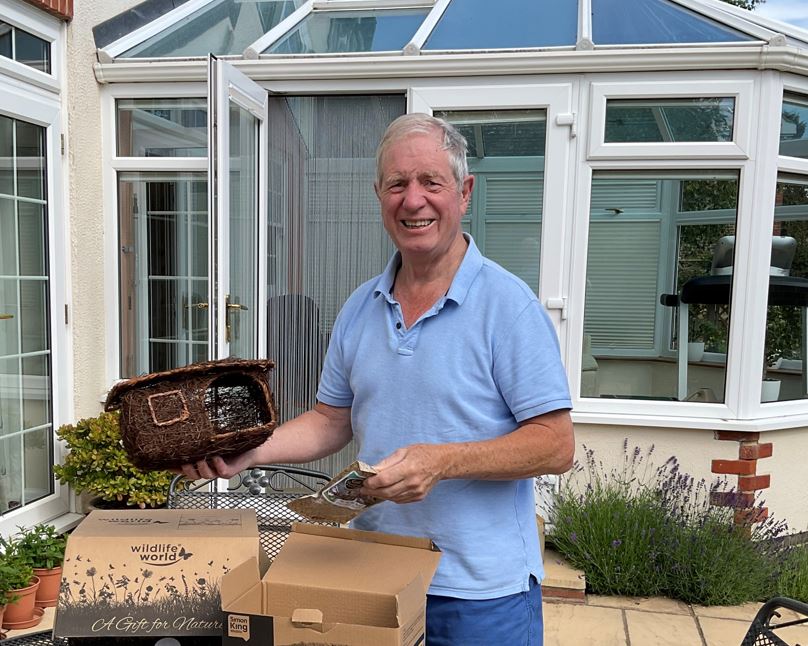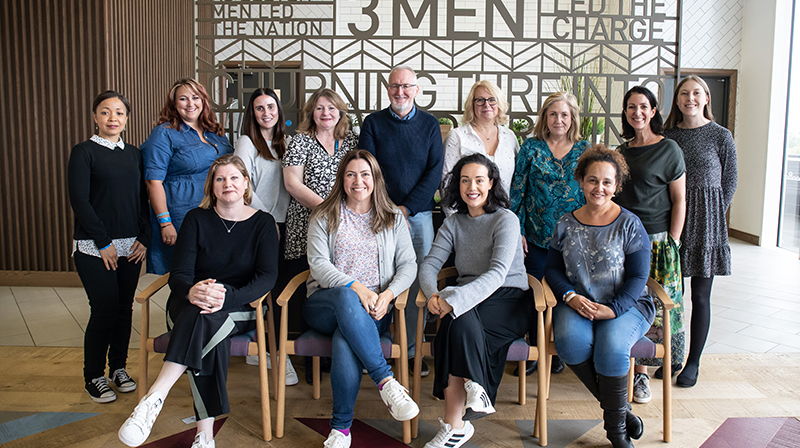Mike's active surveillance story
Mike was diagnosed with localised prostate cancer in 2022 at the age of 77. He is currently having his cancer monitored on active surveillance. Here, he talks through his diagnosis and decision to have his cancer monitored instead of having treatment. He also talks about life on active surveillance and what’s helped him during this time.

My diagnosis
I’ve been getting a PSA blood test, about every year, for the last 13 years. These check-ups started one day when I had a cholesterol check scheduled. My doctor recommended getting a PSA blood test because I have a family history of prostate cancer. My younger brother passed away from advanced prostate cancer at the age of 63. Losing my brother reinforced the need for me to have regular checks.
My PSA levels have always been on the high side. However, in 2022, my PSA was higher than the normal threshold, and I was referred for an MRI scan. At that point, no prostate cancer was found. A few weeks later, I had another PSA blood test that was even higher than the previous one, so I was sent for a biopsy. Waiting for the results was stressful. A nurse from the urology department called a few weeks later to give me the biopsy results. I had prostate cancer.
I never had any symptoms. The news came as a big shock. You start thinking about all sorts of things.
A couple of days later, I spoke with the senior consultant. This biopsy showed I had localised prostate cancer with a Gleason score of 6 (3 + 3). He explained to me that my cancer was low grade (grade group 1) and that all of the cancer cells found in the biopsy looked likely to grow very slowly, if at all.
Choosing active surveillance
Speaking to the urology consultant was frightening and overwhelming. I hadn’t prepared any questions to ask and didn’t know anything about any of the treatment options. My consultant explained to me that because my cancer was localised and had a low risk of spreading, he recommended I go on active surveillance.
I didn’t decide anything during that call, I spent a couple of weeks thinking about my decision. My children helped me look into the different treatment options. We explored high-intensity focused therapy (HIFU), cryotherapy, radical prostatectomy and radiotherapy. I also visited private doctors for a second opinion. My daughters made a spreadsheet, and I started removing treatments that wouldn’t be appropriate for me. I also joined a local prostate cancer group and talked to people with prostate cancer about the different treatment options and their side effects. A few people I spoke to had surgery, but they all seemed more advanced than I was. The possibility of getting side effects after surgery also helped me decide on active surveillance.
During my next meeting with the consultant, I had a long chat about the pros and cons of active surveillance. He explained to me what active surveillance would involve, including regular tests to monitor my prostate cancer. I was relieved after this long chat and decided to go on active surveillance. I felt it was the right decision for me.
Life on active surveillance
I live a healthy life, and I am quite fit. I now get my PSA tested every four months and an MRI scan every year. Since I was diagnosed, I haven’t really been stressed by the fact I have prostate cancer. The process of getting a PSA blood test and receiving the results can be frustrating at times. However, as time has passed, I'm not expecting any surprises, so in my mind, it will be more of the same.
I've always enjoyed pretty good health really...My biggest medical issue is my prostate cancer, but that's actually not given me any day-to-day problems.
My only worry about being on active surveillance is the cancer spreading and not knowing. I shared these feelings of worry with the senior consultants, who reassured me that my cancer is low grade and unlikely to spread and cause problems.
I have also encouraged my son, who is 46 years old, to get a PSA blood test because he has a higher risk because of our family history and my prostate cancer. Thankfully, his levels came back normal.
What has helped me?
Finding people to talk to
My family and friends' support has been so important. They have supported me emotionally and helped guide me through this journey. I have also joined an active surveillance support group. We meet virtually every few weeks and share stories and learn about different topics related to prostate cancer. It’s been helpful to meet other men who are also on active surveillance and understand what I am going through. It’s good to know I'm not the only one in the world with this problem!
Find out more about the support we offer here.
Speaking to others about my prostate cancer helps; it's sort of freeing. It's not just in my head.
Keeping active
I am also part of a walking club. Keeping myself active is very important as I was diagnosed with diabetes. Luckily, with a healthy diet and regular exercise, I am now in remission. I am also conscious that if at any point I need to have surgery to remove the prostate, I need to be fit. So, this helps me stay motivated!
Read more about diet and physical activity.
By sharing my own experience, I can help others who have just been diagnosed.
Stay informed
Researching and reading about the different treatment options has helped me to inform myself. I would also encourage men to talk to their consultants if they have any questions and listen to their advice. They are there to help - you are not on your own!
Story added: January 2024

